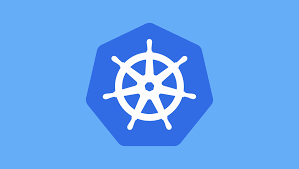Kubernetes - Tools
Popular tools used for Kubernetes summarized by different categories
Kubernetes - Tools
Introduction
- Below is the list of popular tools used for Kubernetes based on category:
Observability and Monitoring
- Observability and Monitoring tools track the performance, health, and availability of applications and infrastructure, enabling teams to detect and diagnose issues to ensure systems run efficiently.
Prometheus: An open-source monitoring solution that collects and stores metrics as time series data, featuring a powerful query language for data analysis. It is commonly used in conjunction with Grafana for visualising the metricsGrafana: A versatile open-source analytics and visualisation web application that supports various data sources, including Prometheus. It is renowned for its ability to create detailed dashboards that provide insights into metrics and logsFluentd: An open-source data collector designed for unified logging layer, allowing the integration of data collection and consumption to enhance data understanding. Its vast plugin ecosystem supports data connections with multiple sources and destinationsKubeCost: Focuses on cost management for Kubernetes, enabling teams to monitor, analyse, and optimise their Kubernetes spending efficiently
Service Mesh
- Service Meshes offer a robust infrastructure layer that facilitates secure, reliable service-to-service communication within microservices architectures, enhancing observability, reliability, and security.
Cilium: Utilises eBPF technology to provide advanced security features, network connectivity, and load balancing for Kubernetes clusters. It’s integral for securing network communication and enforcing security policiesLinkerd: A lightweight, high-performance service mesh that simplifies service-to-service communication with built-in observability, tracing and security, requiring minimal configurationIstio: Offers a comprehensive service mesh solution, enabling fine-grained control over service communication with features like secure service-to-service communication, traffic management, and extensive observability. Istio uses Envoy as its default service proxyEnvoy: Designed for modern cloud-native applications, this edge and service proxy is the foundation for various service mesh implementations, including Istio, providing dynamic service discovery, load balancing, and TLS termination
Container Runtime and Execution
- This section covers tools essential for container management, highlighting the distinction between container runtimes and Kubernetes management solutions.
Docker: The most popular container platform, providing the ability to package software into standardised units for development, shipment, and deploymentKata Containers: Combines the speed of containers with the security of virtual machines, offering an isolated environment for container executioncontainerd: An industry-standard runtime focused on simplicity, robustness, and portability, used by Docker and KubernetesCRI-O: Tailored for Kubernetes, providing a lightweight container runtime that fully complies with the Kubernetes Container Runtime Interfacerunc: A CLI tool for spawning and running containers according to the Open Container Initiative (OCI) specificationgVisor: An open-source container runtime, designed to provide a sandboxed environment for running containers, enhancing security by isolating the workload from the host kernel
Kubernetes Management and Distributions
- Tools and platforms designed to simplify the deployment, management, and operation of Kubernetes clusters.
k3s: A lightweight, easy-to-install Kubernetes distribution, ideal for edge computing, IoT, and CI/CD environments due to its minimal resource requirementsminikube: Enables the running of a Kubernetes cluster on personal computers, ideal for development and testing purposesAKS/EKS/GKE: A managed service that simplifies running Kubernetes on AWS and on-premises, providing seamless integration with AWS services
Continuous Integration/Continuous Deployment (CI/CD) & GitOps
- These tools automate steps in the software delivery process, such as initiating automatic builds, tests, and deployments to streamline the development lifecycle.
Jenkins: A versatile open-source automation server, Jenkins facilitates building, testing, and deploying software, supporting a wide array of plugins for CI/CD purposesArgo CD: Specialises in Kubernetes-native workflows, enabling continuous delivery and automating deployment pipelines directly from Git repositoriesArgo Workflows: An extension of Argo as a workflow engine for orchestrating parallel jobs on KubernetesFlux: Embraces GitOps principles by automatically applying changes from Git to Kubernetes, ensuring that the state of clusters matches the configuration stored in version control
Security and Compliance
- Tools designed to enforce security and compliance within Kubernetes environments, from deployment to runtime.
Falco: Detects abnormal application behaviour and potential security threats in real-time by monitoring system calls and Kubernetes audit logsKubescape: Assesses Kubernetes clusters against known security standards and best practices, identifying compliance issues and vulnerabilitiesOPA (Open Policy Agent): A versatile policy engine that enforces policies across the entire stack, ensuring compliance with security policies and regulations
Storage Solutions
- Storage solutions in Kubernetes are essential for data persistence and management in containerized environments, supporting dynamic provisioning and scaling.
ETCD: Critical for Kubernetes, acting as the primary store for cluster state and metadata, ensuring high availability and consistency across a distributed environmentRook: An open-source cloud-native storage orchestrator for Kubernetes, providing the platform, framework, and support for a diverse set of storage solutions to natively integrate with cloud-native environmentsCeph: A unified, distributed storage system designed for excellent performance, reliability, and scalability
Serverless and Event-Driven Architectures
- These tools help in building applications that can scale from zero to planet scale without managing infrastructure, focusing on event-driven and serverless paradigms.
KEDA (Kubernetes Event-Driven Autoscaling): Dynamically scales Kubernetes applications in response to events from various sources, optimising resource utilisationKnative: Enables the building and deployment of serverless and event-driven applications on Kubernetes, streamlining the development of cloud-native applications
Package Management and Application Deployment
- Simplifying the deployment and management of applications in Kubernetes with tools that manage packages and dependencies.
Helm: The Kubernetes package manager, Helm streamlines the deployment of applications through Helm charts, which define, install, and upgrade even the most complex Kubernetes applications
This post is licensed under CC BY 4.0 by the author.
